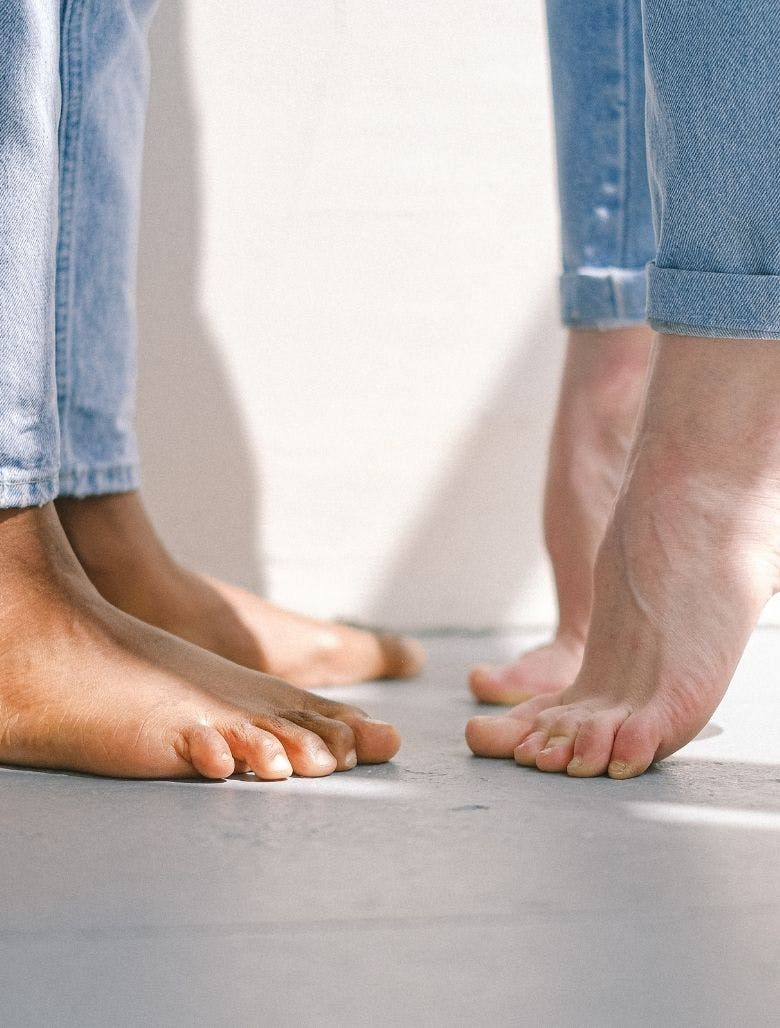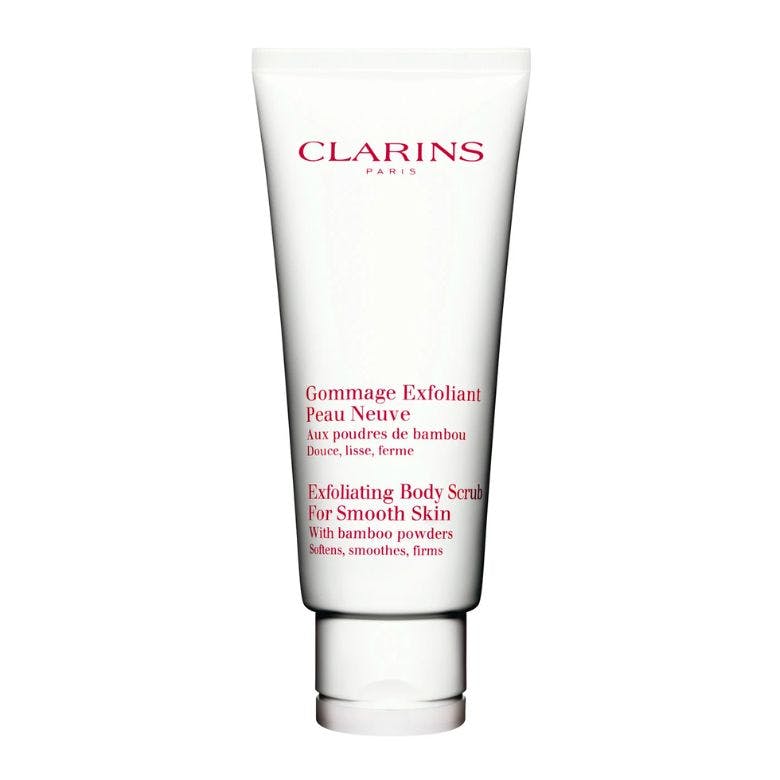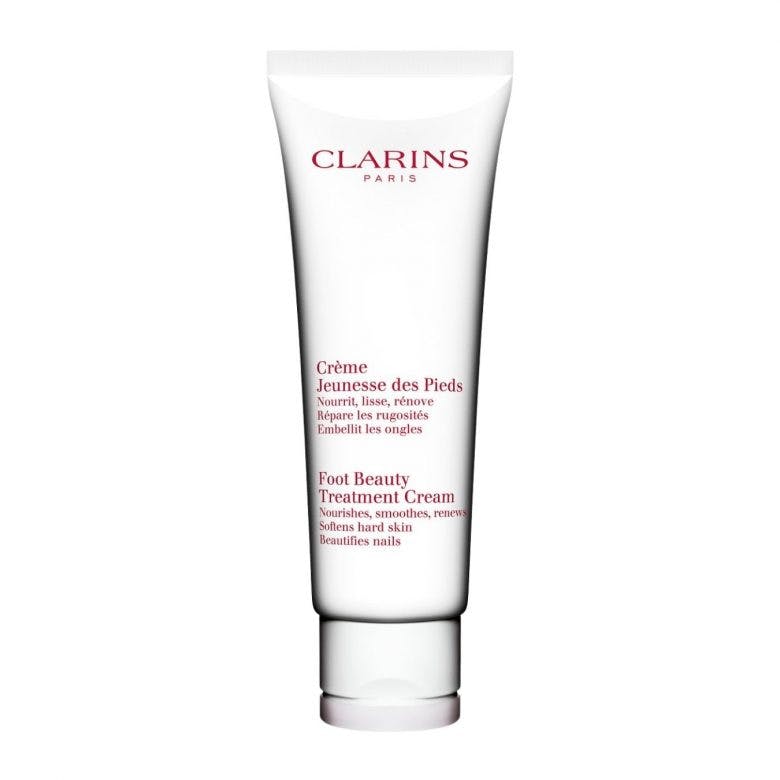Easy Ways To Get Rid Of Dead Skin From Your Feet
10 minutes read
Dry, dead skin on the feet is an extremely common condition that affects all of us. So common that 90% of women in the UK have foot problems and the College of Podiatry reveals that 45% of women suffer from painful cracked heels. Ouch.
No surprise, as the average person walks 115,000 miles in a lifetime.
Thankfully, there is a plethora of treatment creams and tools you can use to remove even the thickest skin from your feet.
Beauty Daily explains the causes of dry, cracked feet and lists down all of the ways to remove thick dead skin from feet.

What causes hard, dry skin on your feet?
There are plenty of reasons why we build up thick, hard and dry skin on our feet, from standing for long periods of time to using harsh soaps and improper foot care.
The skin on our feet lacks moisture due to regularly being encased in closed shoes, and shoes can make them susceptible to friction, rubbing and pressure, which experts say can stress the feet, leading to irritation and blistering. Even if you wear shoes that fit well, excessive walking or running can lead to corns and calluses, too.
Charlotte McHale, Clarins Training Manager, explains: “The skin on our feet is the thickest compared to the rest of the body. For this reason, it is prone to drying, thickening (callus) and peeling.”
In addition, the skin on the feet is made of several sweat glands but no oil glands, making it more susceptible to being dehydrated and sensitive. Smoking, stress, excessive exposure to the sun, dehydration, hot baths and showers, and low humidity worsen the picture.
Plus, as you age, sweat glands lose their effectiveness, meaning feet get drier and more cracked the older we get.
Specific medical conditions
Certain medical conditions can cause dead skin on the feet. These conditions include diabetes, psoriasis, athlete’s foot, fungal infections, and eczema.
Irritation
Common causes of irritation on the feet include dry skin, athlete’s foot, blisters, and contact dermatitis.
Ageing
As we age, our skin becomes less elastic and tends to dry out more easily, which can lead to dead skin cells accumulating on the feet. The feet are also more prone to developing calluses and corns due to the constant pressure of walking and standing.
Lack of moisture
When the skin on your feet is not properly hydrated, it can become dry, cracked, and flaky. This can lead to dead skin buildup. Keeping your feet moisturised can help prevent dead skin buildup.
Heat and humidity
High temperatures and humidity can cause your feet to sweat, which can lead to an accumulation of dead skin cells. Sudden increased moisture can also cause the skin to become soft and prone to cracking, which can lead to dry skin buildup.
Here are the five best ways to remove dead skin from your feet:
1. Prep work: remove hard skin
Don’t soak your feet yet. Instead, remove the bulk of dead skin when feet are still dry with a pro foot file. When feet are wet this can mask areas that need to be treated and also tear skin too. We love this budget-friendly file by Jessica. Begin filing with the coarse side first in one direction and then finish with the smooth side. It’s satisfying as you see the dry skin turn to dust.
Tip: Place a towel down to catch the debris that falls from the feet.
2. Softening tactics
Soaking your feet will soften the skin and prepare it for the granular-style scrub or pumice stone.
When removing dead skin from the heels and pads of your feet, McHale recommends using a pumice stone. “It’s a light, yet abrasive, stone that can effectively slough and shed off dead skin cells. It can also soften your calluses.”
Tip: Choose natural stone pumice as they are kinder to your feet and for the environment too. Look for versions that are ‘natural’ or state they are made from ‘pure volcanic lava rock’.
Start gently massaging your feet, focusing on specific areas like the heel and the ball of the foot (especially if you have calluses), but leave the softer arch or top of the feet alone.
3. Exfoliate dead skin
Follow up with a foot scrub to exfoliate the dead skin that sits superficially on the skin’s surface.
Beauty Daily recommends using the Exfoliating Body Scrub, £32. This product contains smoothing natural bamboo powders and a hint of ginger that effectively buffs away rough, flaky surface cells and impurities, revealing soft baby feet. It will also prepare the skin for the treatment that follows.
Clarins Exfoliating Body Scrub, £32

4. Moisturise: Cocoon your feet in a foot cream
Experts say the best way to prevent dead skin from forming on your feet is to moisturise regularly. So, once the hard skin is removed post-soaking, scrubbing and exfoliating – soothe the soles of the feet using a rich, moisturising and hydrating foot cream.
When looking for foot creams, opt for the ones formulated with shea butter. Multiple studies have shown that shea butter has anti-inflammatory properties and can reduce the redness of dry and cracked feet. Shea butter is also beneficial for treating itchiness and eliminating walking discomfort.
Clarins Foot Beauty Treatment Cream, £27 is not only formulated with shea butter but also with antifungal arnica extract and virgin cashew nut oil, which all work to renew and protect from ankle to toe without the need for medical solutions, unless severe health problems arise, requiring more than a foot treatment. This foot cream relieves swelling and fatigue. And thanks to myrrh, it also strengthens and beautifies nails.
Clarins Foot Beauty Treatment Cream, £27

5. Use cotton socks
After generously slathering on the foot cream, slip into some cotton socks and leave on overnight. This can help your feet lock in moisture while you sleep.
Experts say wearing cotton socks after moisturising can help keep your heels from drying out and improve cracked heels in super-quick time.
How to prevent dry feet?
Keep your feet clean and dry
Wash your feet daily with a mild soap and warm water. Always make sure to dry your feet completely, especially between the toes.
Opt for a warm (not hot) bath
Be careful not to have your bath water too hot and avoid harsh soaps and lotions.
Wear footwear and socks that fit correctly
Make sure your shoes are not too tight and that your socks are made of a breathable fabric.
Be gentle with your feet
Instead of vigorously rubbing your feet dry after a shower, gently pat them dry with a clean towel.
Moisturise your feet daily
Use a thick, oil-based moisturiser to help lock in moisture and protect your skin.
Avoid walking barefoot
Walking barefoot can expose your feet to bacteria and other irritants that can cause dryness.
Sleep in silicone socks
They are designed to keep your feet dry and reduce friction, which can help prevent the buildup of dead skin.
Other methods of getting rid of dry skin on the feet
Use a salicylic acid foot peel
Salicylic acid-based foot peels can be used to soften dead skin on the feet – and they often also contain glycolic acid which provides a deep exfoliating effect. However, it is important to note that these products should only be used on the feet if the skin is not broken or irritated, as doing so can cause inflammation and sensitivity and the skin doesn’t always shed at the same time – so their is a transition period between rough and baby-soft skin.
Try an electric callus remover
Electric callus removers are a great way to remove dead skin from feet as they use a rotating head with a rough surface to gently buff away dead skin cells. They are also easy to use and depending on model can be used on both dry and wet feet. If you are heavy-handed, foot experts recommend tackling dead skin on feet when they are dry, because when wet, you are prone to tear skin without realising.
Baby foot peel
A baby foot peel is a type of foot treatment that is designed to help soften and remove dead skin from the feet. It typically involves soaking the feet in a special solution for a period of time, then using a foot file or pumice stone to remove the dead skin from the feet. The results? Softer, smoother feet with no dead skin.
Homemade remedies
Make a homemade foot scrub
Create a DIY foot scrub by combining sugar and olive oil. These ingredients will help to exfoliate and moisturise your feet at the same time.
Use petroleum jelly
After applying your foot moisturiser, slather your feet in petroleum jelly before bed and cover them up with a pair of socks. The petroleum jelly will act as a barrier to prevent any moisture from escaping the skin.
Create an epsom salt soak
Add some epsom salt to a bowl of warm water and soak your feet for 10-15 minutes. This will help to soften the dead skin and make it easier to remove.
When should you see a doctor?
If your feet still suffer from drying and cracking and home remedies haven’t been helping, we recommend seeking a professional approach to care – find a podiatrist here.
If you have dead skin on your feet that is causing pain, redness, swelling, or other symptoms, you should see a doctor. Especially if these symptoms are accompanied by an infection, an open wound or if the dead skin does not heal after a few weeks.
FAQ
Can you use an oatmeal scrub to remove dead skin on the feet?
Yes, oatmeal scrub can be a great way to soften the dead skin on your feet. Oatmeal is a natural exfoliant that helps to remove dry and dead skin cells, leaving your feet feeling soft and smooth. It also helps to moisturise the skin and can help to reduce inflammation.
Should I peel the dead skin off my feet or not?
It is not recommended to peel the dead skin off your feet. Instead, use a pumice stone or foot file to help remove the dead skin, and make sure to moisturise your feet afterwards.
How often should you use a foot file?
Try using a foot file once every two weeks to remove dead skin and keep feet smooth.
What is the best way to get rid of blisters/dead skin on my toes?
The best way to get rid of a blister or dead skin on your toes is to soak them in warm water for 10 minutes and then use a pumice stone or foot file to gently remove it. You can also apply a moisturiser to the area to help soften the skin and prevent further irritation. But if the blisters are particularly painful or infected, it is best to see a doctor for treatment.
How to remove dead skin from feet using baking soda
Another method of removing dead skin from the feet is to use a baking soda-based soak. However, some dermatologists advise that this method can cause inflammation, redness and irritation – which can make feet become even drier. If you have particularly sensitive skin, or sensitive areas on your feet, it’s best not to try this method.
Don’t disregard baking soda fully on this advice alone though! It has hundreds of great uses – including removing fake tan!
Are calluses dead skin?
Calluses are thick, hard areas of skin that are generally caused by repeated friction, irritation or pressure. While dead skin may build up on the surface of a callus, dead skin is generally not the root cause of calluses.
Are dead skin cells harmful?
In short, no. Dead skin cells are a normal part of the skin’s natural regeneration process. A skin cell has a life cycle which lasts around six weeks – the last stage of which is for it to die, before being replaced. Most dead skin cells will shed on their own, however sometimes the skin needs a helping hand when there is excess buildup.
Can you use paraffin wax to remove dead skin?
No, it is not recommended to use paraffin wax to soften the dead skin on your feet. It is better to use a pumice stone or foot file to gently exfoliate the dead skin cells. Additionally, you can apply a moisturising lotion or cream to keep your feet soft and hydrated.
Suffering from dry skin elsewhere? Read How To Get Rid Of Dry Lips, According To Experts
Sign up for our newsletter
We will keep you in the loop for special offers, exclusive gifts and product news.

